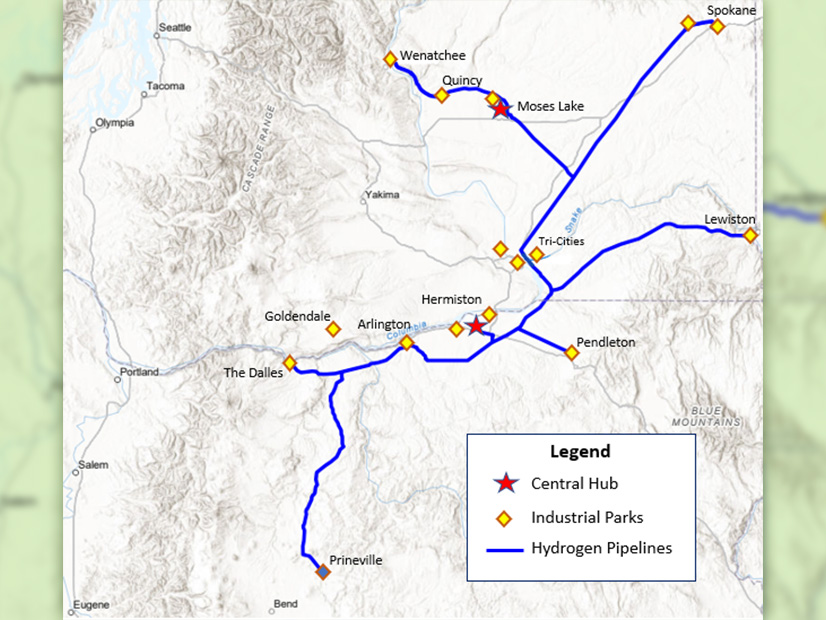
An Oregon renewables company wants to construct two hydrogen manufacturing plants and a network of hydrogen pipelines in eastern Oregon and Washington later this decade.
Obsidian Renewables of Lake Oswego, Ore., plans to build hydrogen production plants at existing industrial parks in Hermiston, Ore., and Moses Lake, Wash. The plants would use electrolyzers to separate hydrogen from water and wastewater.
These would supply a proposed pipeline system that would terminate at points in The Dalles, Pendleton and Prineville in Oregon, and in Wenatchee and Spokane in Washington. Another pipeline would extend to Lewiston, Idaho. One connecting pipeline would go through the Tri-Cities, which is the second-most populated area in eastern Washington behind Spokane.
The network would be powered by electricity from new wind and solar farms, with each type of renewable resource expected to supply 800 MW.
The company believes the project will cost roughly $3 billion, Obsidian President David Brown said in an interview.
Obsidian is still putting together the pieces of the project, with Brown declining to name potential partners. He said different partners will likely tackle different aspects of the project. For example, one might build the plants, while another constructs the pipeline. Other partners would build the wind and solar farms.
Obsidian hopes to tap into the $8 billion fund that the U.S. Department of Energy has set aside to create four to eight regional hydrogen hubs across the nation. Each hub would get $1 billion to $2 billion. Washington is aggressively pursuing that money to create a Northwest hydrogen hub, including passage of legislation this year to help organize the effort. (See Wash. Looks to Boost Prospects for Winning Hydrogen Hub.)
In Washington, one hydrogen manufacturing plant owned by the Douglas County Public Utility District is scheduled to go online in East Wenatchee in mid-2023. The Port of Seattle is studying whether it wants to get into hydrogen manufacturing and distribution. Refueling stations for hydrogen-powered vehicles are in the works for East Wenatchee and the transit authority in Chehalis and Centralia
DOE expects to receive roughly 100 proposals by September, after which it will begin winnowing through them. No timetable is set for DOE’s decisions on how to allocate the $8 billion.
Brown said the earliest that the hydrogen plants might be built is 2025 but added that completion could be later this decade. The pipelines could likely take three years to build after Obsidian obtains all the needed permits, he said.
Potential customers would be fertilizer plants, hydrogen-powered vehicles and other agricultural uses. Also, Eastern Washington is home to several data farms, which could use hydrogen as fuel for their backup generators.
Brown did not rule out trying to connect with any potential western Oregon and Washington hydrogen customers that might want to build pipelines across the Cascade Mountains.

